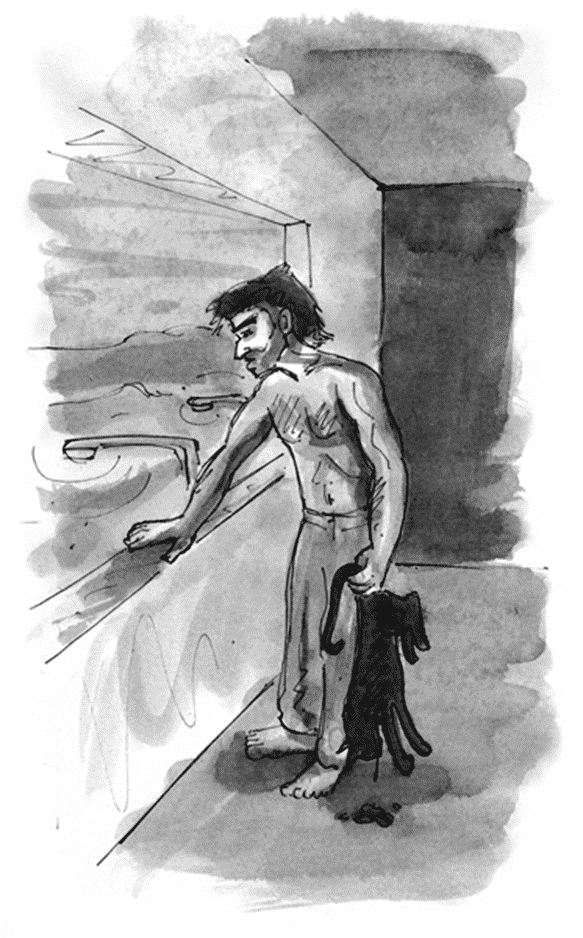On a quiet afternoon in the ward the duty sister approached me and said
Matron Sharp wanted to see me. I was to go to her office on the 4th
floor immediately. This was forty years ago and, as I have described in a
previous post, (My Affair with Florence Nightingale)I was working as an orderly in A1 Medical Ward at Groote Schuur Hospital.
An orderly was an assistant male nurse who occupied the second lowest
position in the nursing hierarchy, superior only to a porter. The highest
rank in the chain of command was that of Matron, and there were four of
them. They were uncompromising disciplinarians who demanded impossibly high
standards from those working under them. My face must have looked like I was
recently deceased and my hand shook as I knocked on Matron Sharp’s office
door.
To my surprise, she didn’t start shouting at me for having left a spoon
down some old codger’s gullet, or for over warming a bed pan and burning a
patient’s bum. Instead she informed me that the Department of Transport was
urgently seeking the services of a suitably qualified person to fill the
position of medic and serve as a member of the next team leaving for Gough
Island in two weeks’ time.
Because my mouth was hanging open she told me to shut it and stop looking
stupid.
“But I’m not a doctor,” I protested. “I’m just an orderly and not even a
…”
“Don’t worry. You don’t have to be a doctor. The man you will be replacing
is a veterinary assistant who was recruited from the Cavalry Corps in the
Army. His only medical experience was with the gelding of horses.”
That is how I got to spend a year on Gough Island as a member of the 26th
seven-man Meteorological Expedition.
Four ornithologists spent the takeover period on the island studying
aspects of bird life. They had plenty of birds to choose from. Eight
million, in fact, but they confined their study to albatrosses. There are
three species breeding on Gough, the Yellow-nosed, the Sooty and the Tristan
(Formerly thought to be a Wandering Albatross but now classified as a
slightly different species.) Before these ornithologists boarded the ship
and returned to Cape Town they approached me with a request. They had
noticed the interest I had shown in their work and wondered if I could
assist them by ringing some of the Tristan Albatross chicks before they left
the nest in a few months’ time.
I agreed, and when there was a break in the weather Ray and I trudged up
the mountain and made our way to the main breeding site. Ray was a member of the contingent of three Met
officers and was a keen hiker. We pitched our tent and then went into
action. One of us would approach the chick on its nest, grab it and hold it
under one arm while clamping its beak shut with his free hand. The other man
was then able to position the metal ring around a leg and close it shut with
a pair of modified pliers. The bird was released and it climbed back onto
its mound of mud, grass and moss.
We ringed about 10 chicks that afternoon and another 20 the following
morning before returning to the base. We had spent the night in our tent,
protected from a near gale force wind that tore through the valley. In the
early hours I had awoken to find a mouse exploring my beard. In torchlight
we chased four visitors from the tent and tried to go back to sleep.
At that time, in 1980, the island was already overrun with millions of
feral house mice (Mus musculus), which had been introduced at the beginning
of the 19th century by a
party of sealers. We treated the presence of these mice as a nuisance and a
threat to any dry foodstuff not kept in secure containers.
About ten years ago I learned that these mice had adapted to conditions on
the island in the space of some 200 years and had developed a taste for eggs
and chicks. Then, five years ago I was horrified at the news that as a
consequence of their new protein rich diet these rodents had increased in
size by as much as 50 percent. They had begun to scavenge on the chicks of
even the largest birds, the albatrosses.
Field studies revealed that as many as 2 million eggs and chicks were being
lost to the predators each year, and some of the rarer species, notably the
Tristan Albatross, were threatened with extinction. In the face of this
looming ecological disaster the Royal Society for the Protection of Birds
(RSPB) and other organisations developed
a plan to eradicate the mouse population. Using helicopters with agricultural dispensers tons of poisonous cereal
would be scattered over the entire surface of the island. This method had
been used successfully on other islands and the operation was scheduled for
early 2020.
Personnel and equipment were already on Gough when the Covid 19 pandemic
intervened and the undertaking had to be called off. One type of plague was
given a reprieve by the arrival of another. This means that for at least another year I will be tormented by the
image of an albatross chick being slowly gnawed to death as it sits on its
nest.
To view my longer work as an author, you can find me on Smashwords here.





